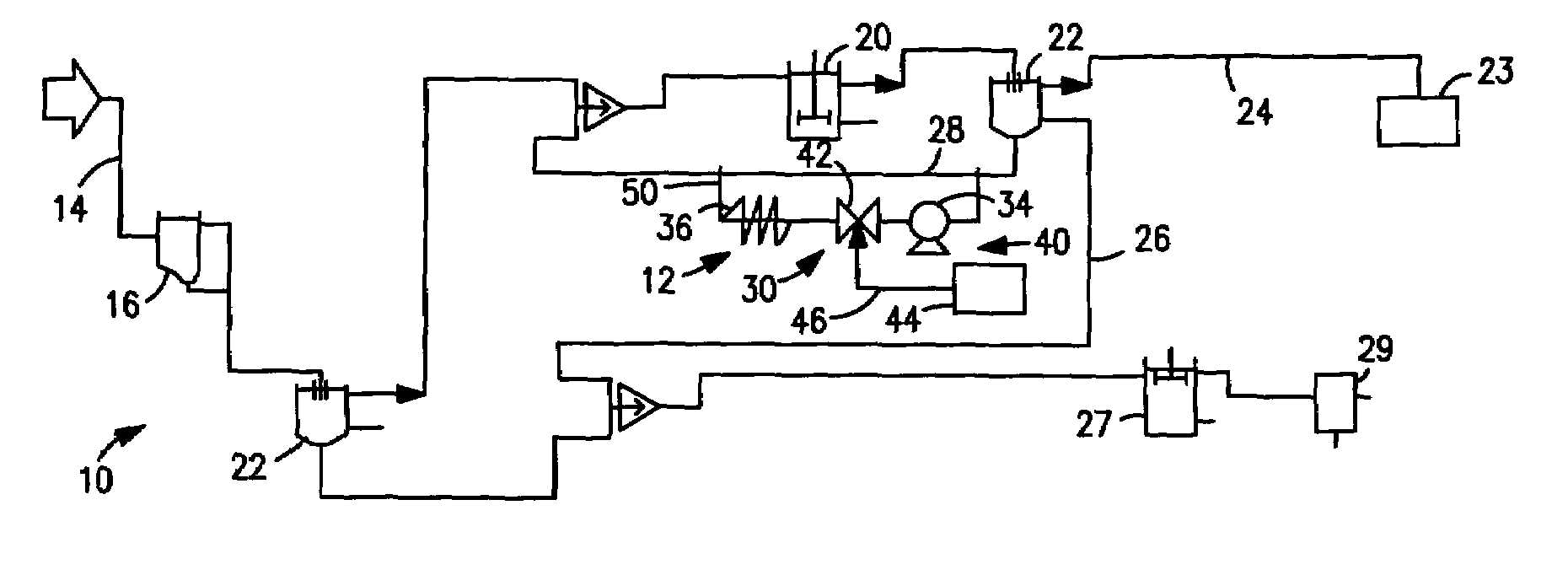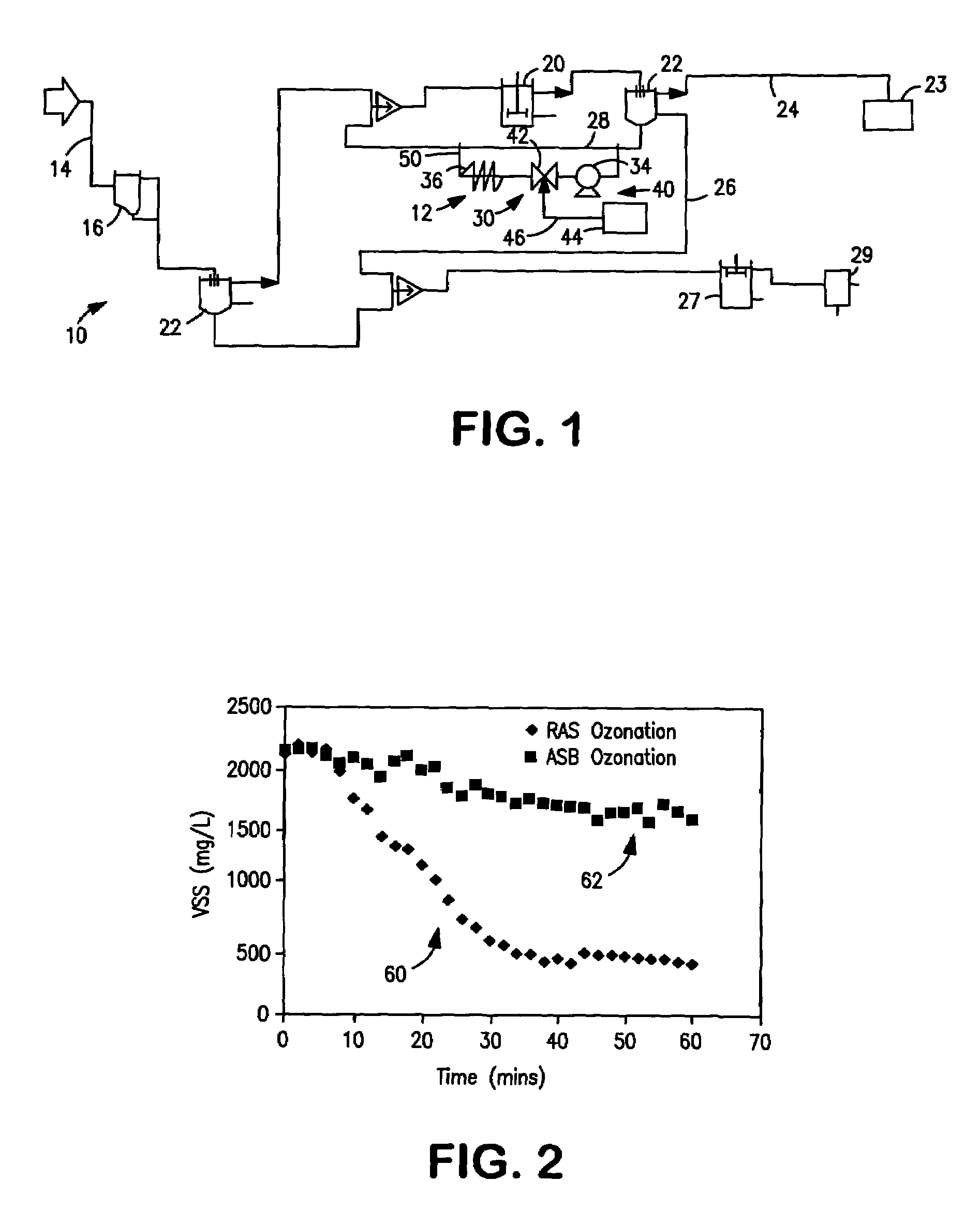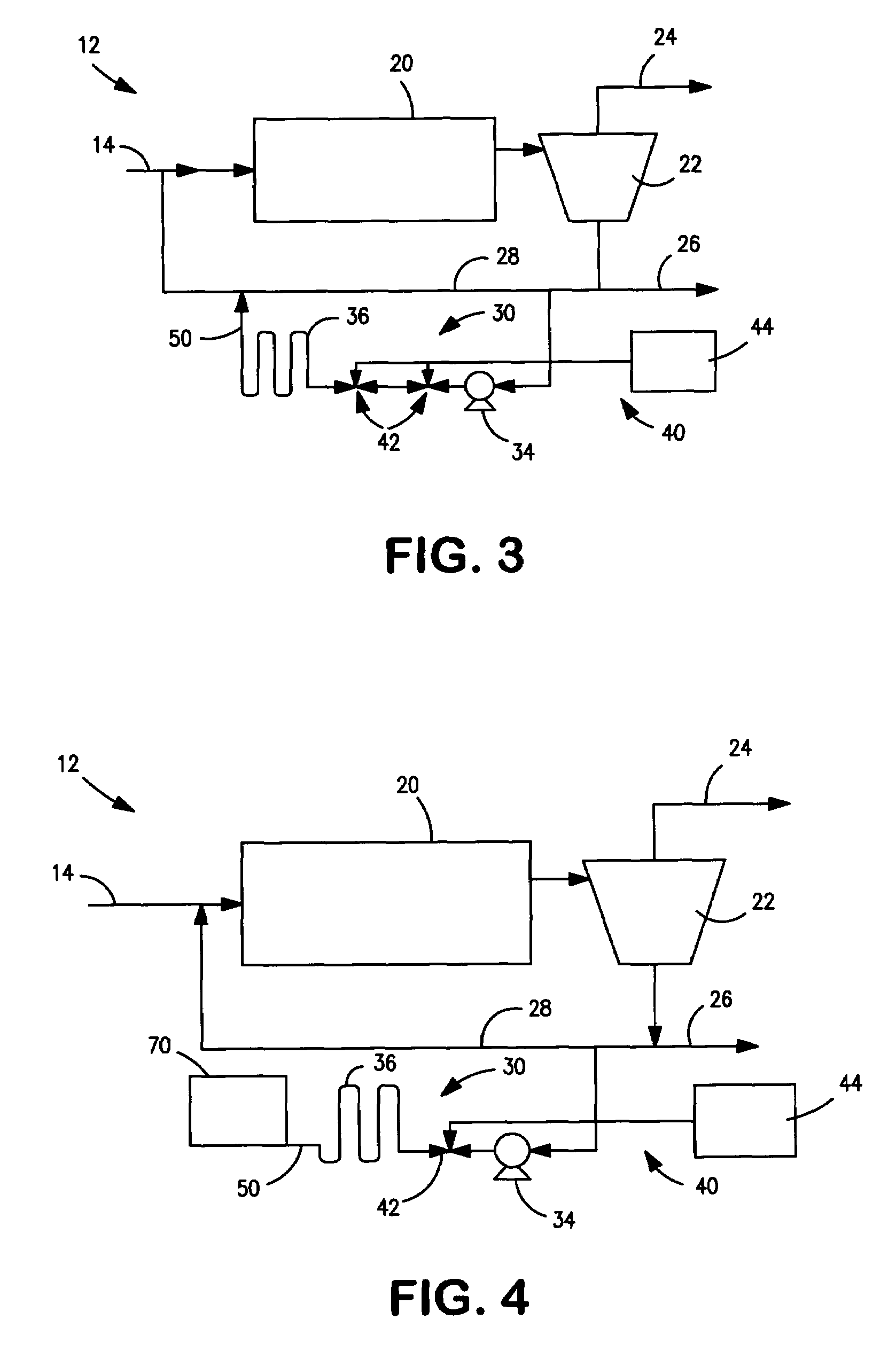System and method for eliminating sludge via ozonation
a technology of activated sludge and ozonation, which is applied in the direction of sludge treatment by oxidation, multi-stage water/sewage treatment, separation processes, etc. it can solve the problems of inability to achieve the effect of reducing the formation of excess biosolids, promoting effective liquid-gas contact, and optimizing the residence time distribution of biosolids
- Summary
- Abstract
- Description
- Claims
- Application Information
AI Technical Summary
Benefits of technology
Problems solved by technology
Method used
Image
Examples
Embodiment Construction
[0023]In conventional activated sludge treatment systems and methods, oxygen is required both for the chemical oxidation of the substrate material as well as for new cell synthesis and metabolic processes of the bacterial cells. The oxygen requirement for the chemical oxidation of the substrate material in the treatment process is often referred to as the Chemical Oxygen Demand (COD) whereas the oxygen requirement for the removal of the substrate via the consumption of substrate for new cell synthesis and the maintenance of metabolic processes of the bacterial cells is referred to as the Biological Oxygen Demand (BOD).
[0024]FIG. 1, shows a schematic illustration of an activated sludge treatment system (10) incorporating an embodiment of the present sludge ozonation system (12). As seen therein, the typical activated sludge treatment system (10) includes an intake conduit (14) adapted to receive wastewater, various pre-processing devices (16) and an activated sludge basin (20), one o...
PUM
| Property | Measurement | Unit |
|---|---|---|
| Percent by volume | aaaaa | aaaaa |
| Percent by volume | aaaaa | aaaaa |
| Volume | aaaaa | aaaaa |
Abstract
Description
Claims
Application Information
 Login to View More
Login to View More - R&D
- Intellectual Property
- Life Sciences
- Materials
- Tech Scout
- Unparalleled Data Quality
- Higher Quality Content
- 60% Fewer Hallucinations
Browse by: Latest US Patents, China's latest patents, Technical Efficacy Thesaurus, Application Domain, Technology Topic, Popular Technical Reports.
© 2025 PatSnap. All rights reserved.Legal|Privacy policy|Modern Slavery Act Transparency Statement|Sitemap|About US| Contact US: help@patsnap.com



